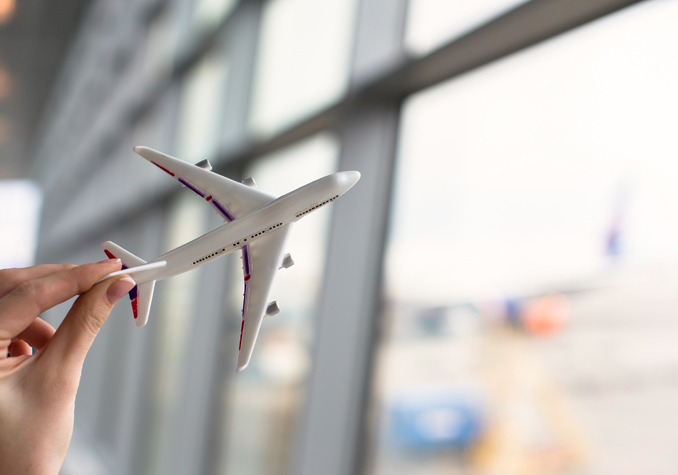Proper following of the process and choosing the right aircraft make things easier
For the convenience of the client airlines have provided facilities to carry the cargo according to their item category. It is very important to satisfy the customer to nourish the positive PR and enhance the circle of customers. It gets important on part of the client to know how the whole process works so that the work of the freight forwarder gets easy and the client knows that what is happening at that time and why it takes time to complete the consignment.
The person involved in the business of freight forwarding has all the experience and team in managing the process especially of the customs that becomes a major hindrance and delays the whole process. Air freight custom clearance is a comparatively easier process than that of ocean freight if handled properly
The main reason of choosing air cargo as means of transport is the speedy delivery. If it cannot be accomplished there is no difference between air or ocean freight and other means of transporting the goods. Proper planning on behalf of the airline is needed for safe and speedy completion of every formality involved in timely transportation of the cargo.
Proper Documentation:
The first and foremost step in the air cargo process is documentation needed to start the journey. Without it the goods cannot leave the airport warehouse. After the arrival of the shipment at the warehouse it is in the hands of a handling agent. The handling agent can be a separate company with whom the airport authorities have contracted or it can be an in-house function handled by the airline.
The handling agent has to keep a check on incoming goods and administer them. Then sort the goods according to their category and checks the documentation. In some countries the copy of documents is enough while majority demands original documents, for this keep electronic copy of the documents to send them any time needed.
The consignee should take in written all the documents required by the country and their demands to make sure that all the documentation is complete in all aspects. For an improper handling of documents can lead to cargo check which results in delay of shipment.
Loading Process:
After the security checks and screening the goods are then transferred to especially designed ULDs that fit in the structure of and aircraft. Different types of ULDs are designed to fit a specific aircraft that is going to be used for the cargo.
There can be different ULD types that are used according to the goods category; main deck pallets, lower deck pallets, lower deck containers, animal stables or containers, security containers and environmentally controlled containers.
The cargo should be properly packed to avoid any kind of mishandling or harm to the goods. There should be no holes left while packing, nor should be the tapes around the package too tight that can tear it apart. Every aspect should be kept in mind while packing the cargo to save yours and crew’s time.
For the custom check, the exact height weight and length of the cargo should be notified also the type of the packing. If the cargo has more than one package then the number of packages should also be notified in the form.
Not every cargo is loaded in ULD to carry it through the flight. Some small cargos or air mail are also taken as loose packages.
Inside Handling:
After the loading of the ULDs or the loose packages, the documents are handled to the on board crew and the flight is ready to be taken off. Now it becomes the responsibility of the air staff to handle the cargo properly. There is a facility to control the temperature of every compartment of the air-craft which the crew has to operate carefully to assure the proper management of the goods.
The temperature at the ULD can be controlled if it is specifically equipped with such facility. If there is an animal container inside then the animal attendant may fly on board to look after them during the flight.
Choosing the Proper Air Freight Company:
Another very important task for forwarding freight is to choose the company that is trustworthy and can ensure proper transfer of the cargo. If you have to transport a loose cargo then any airline with good repute can do.
But when talking about large consignments which involves business and the consignment has to reach the client in time and according to the order then there are many things the shipper has to consider before booking. Airline companies either have separate aircraft’s especially designed to take cargo or they adjust the cargo in the passenger planes. It’s the client who has to decide that what type suits the cargo.
Reaching the destination:
Normally some time before the handling agent at the origin will inform the destination handling agent of the airline about the details of the consignment and the flight details and time of arrival.
This enables the handling agent at the destination to prepare for receiving the cargo. The whole process is repeated but this time in reverse order. After all the document and package unloading and check the handling agent will inform the receiving forwarding agent that the shipment has arrived and the documents can be picked up.
Cargo Aircraft:
For the delivery of small consignments the cargo compartment in the passenger planes can serve the best for pricing as well as a speedy delivery as the process of checking and passing customs will be less for one small package then a big consignment.
While for the cargo that contains more complex and big sized objects or chemicals the cargo aircraft is a much better option. This aircraft is designed for cargo and do not carry passengers as a passenger plane do. One or two large doors and body designed to have a large area to fit in cargo of any size, with lots of wheels to land in any condition makes the air-craft different from the rest of the types.
Although very useful but the cargo aircraft’s represent a small proportion in merchandise market where majority of the cargo is transported in ULDs in normal passenger planes.













